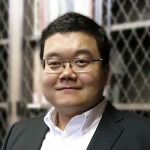Revealing Subcellular Structures with Live-cell and 3D Fluorescence Nanoscopy
Hosted By: Laser Systems Technical Group
26 October 2020 10:00 - 11:00
Eastern Time (US & Canada) (UTC -05:00)We are in an exciting era of biomedical imaging where the inner-workings of cells and tissues can be explored by rapidly developing imaging methods. Labeling specificity and live cell compatibility make fluorescence microscopy an important tool in biomedical research. Its resolution, however, is limited by diffraction to ~250 nm, preventing us from resolving detailed structures within the cell. The recent advent of single molecule switching nanoscopy methods (SMSN, also known as PALM/STORM), overcomes this fundamental limit by stochastically switching single fluorophores on and off so that their emission events can be localized with high precision resulting in a reconstructed image with down to ~25 nm lateral resolution. However, its application has been largely limited to fixed and flat samples due to the poor temporal resolution, inferior resolution in z, and rapidly deteriorating resolution in thick samples.
In this webinar hosted by the Laser Systems Technical Group, Dr. Fang Huang of Purdue University will present some of their most recent developments which synergistically combine newly available sensors/devices such as sCMOS cameras and deformable mirrors, analytical methods such as deep learning and novel instrumentation to allow SMSN imaging in live cells and tissue specimens. Dr. Huang will demonstrate the capabilities of these new imaging systems in revealing the fine details of subcellular structures from a diverse set of biological systems including viruses, bacteria, yeasts, mammalian cells and tissue sections.
What You Will Learn:
- Single molecule localization based super-resolution microscopy
- Nanoscopy of tissues assisted by adaptive optics and in situ PSF retrieval
- Coherent detection of single molecules fluorecence for 3D imaging
About the Presenter: Fang Huang, Purdue University
 Fang Huang earned his bachelor degree in Physics at the University of Science and Technology of China in 2004 and his doctoral degree in Physics from the University of New Mexico in 2011. Before joining Purdue, Fang Huang was a Brown-Coxe Postdoctoral Fellow in Cell Biology at Yale School of Medicine. Huang received Excellence in Research Awards from Purdue, Maximize Investigator Research Award (MIRA) from NIH, 2016 Young Faculty Award from DARPA.
Fang Huang earned his bachelor degree in Physics at the University of Science and Technology of China in 2004 and his doctoral degree in Physics from the University of New Mexico in 2011. Before joining Purdue, Fang Huang was a Brown-Coxe Postdoctoral Fellow in Cell Biology at Yale School of Medicine. Huang received Excellence in Research Awards from Purdue, Maximize Investigator Research Award (MIRA) from NIH, 2016 Young Faculty Award from DARPA.
The Huang lab aims to develop the next generation high resolution optical microscopy methods, known as super-resolution microscopy or ‘nanoscopy’, that are capable of resolving subcellular structures in three dimensions while monitoring their dynamics in living specimens with nanometer resolution. The group builds novel nanoscopy instruments that combine techniques from engineering and physics such as single molecule fluorescence interference, nanofabrication and adaptive optics and seeks to invent algorithms that take advantages of concepts in mathematics, statistics and signal processing. We aim to significantly push the envelope of high resolution imaging in directions of live cell and tissue imaging, two major roadblocks of modern super-resolution techniques and further allow building dynamic structural models of large protein complexes in live cells and tissues 1-10 nm resolution.
